

This site uses non-intrusive cookies to enable us to provide a better user experience for our visitors. No personal information is collected or stored from these cookies. The Society's policy is fully explained here. By continuing to use this site you are agreeing to the use of cookies.
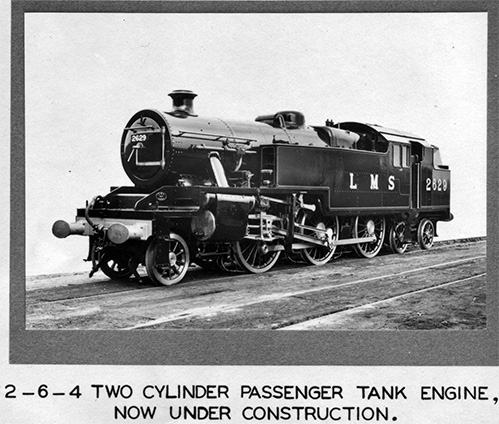
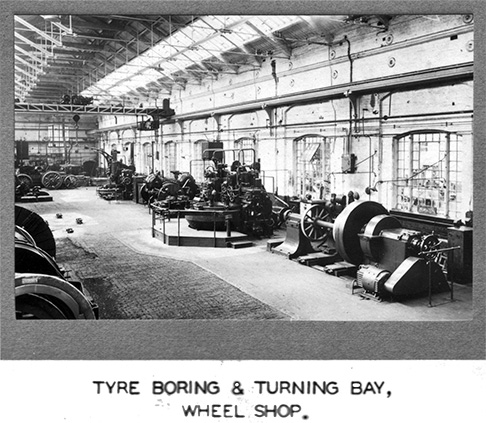
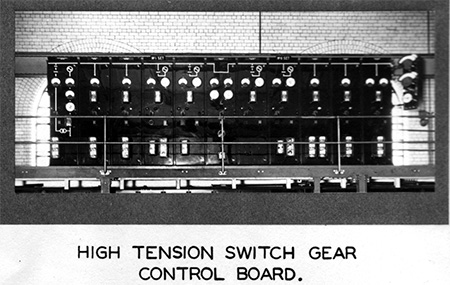
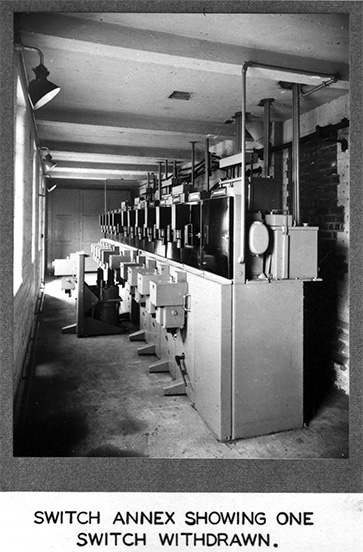
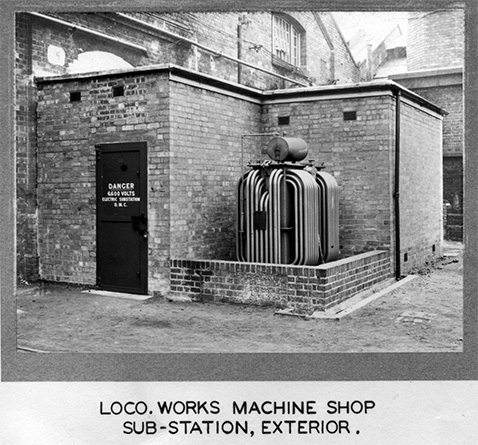
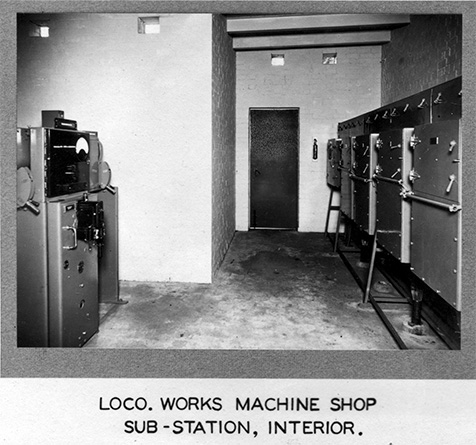
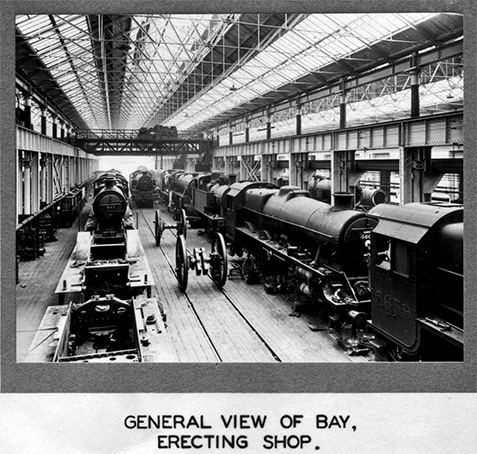
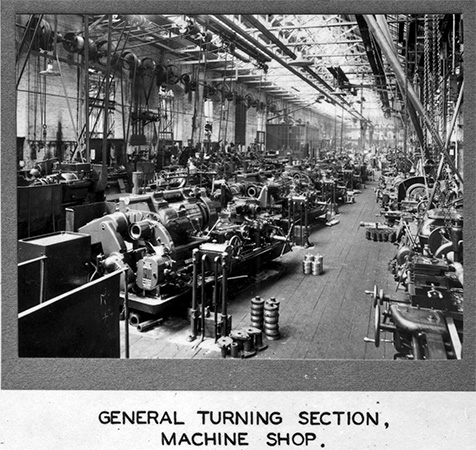
The first Workshops were built in 1840 for the North Midland Railway which became a constituent Company of the Midland Railway. The Works have been enlarged from time to time, the largest extension taking place in 1874.
In addition to the Locomotive work, maintenance work is carried out on travelling cranes, lifts, pumps, and other machinery in the various Motive Power Depots, Goods Sheds and Outstation Depots.
Maintenance of all classes of machinery, including installation and repair of air compressors, cupolas, machine tools, cranes, lifts; water, gas and air mains; feed pumps, heating apparatus, and fire engine work.
Work in connection with new schemes is frequently carried out in conjunction with contractors at the various depots on the Midland Division, which embraces the whole of the London area. Most of the machinery in the Shop was modernised two years ago, the new plant costing approximately £4,700.
Completely fitted up with first aid apparatus and rest room.
Qualified sister in charge. Motor Ambulance kept in vicinity,
Four large Mess Rooms accommodating 700, 700, 450 and 250 men respectively; Cooking is carried out without charge.
Steam hammers of 7 and 12 cwts. capacity are arranged down the centre of the Shop with Smiths' hearths located along the walls.
One end of this shop deals with springs, making and repairing both the older type of plain carbon spring where the buckle is put on hot, and also the new type of spring made up of ribbed plates of silico manganese steel secured in the buckle with wedge and cotter without any heating. Every spring is tested for deflection.
There are two oxygen cutting machines which cut certain motion parts out of the solid which had previously to be forged, also nut and bolt forging machines.
One additional petrol tractor has recently been introduced eliminating a certain amount of hand trucking.
Last year saw considerable changes in the equipment in the Wheel Shop. Two new tyre boring machines replaced four machines which had become obsolete due to the advance made in the performance of cutting tools. The new machines are illustrated, and are adapted to perform finishing cuts on tyres at very high speeds (650 ft. per min.) with light cuts and fine feeds. This imparts a very accurate and fine finish to the machined surfaces.
An entirely new type of machine for turning at high speeds the rims and faces of wheel centres when mounted on the axles, has also been put to work. This machine gives a very accurate finish to those parts of the wheel centre which contact with the fine bored tyre.
In addition, a high speed centre lathe for finish turning the journals and Wheel seats of straight axles by means of cemented carbide tools, has been installed, also a smaller lathe for dealing with crank pins in a similar manner. The larger of these machines has been fitted with a range of instruments to enable tests of cutting tools to be made and recorded.
One new plain cylindrical grinding machine has replaced a similar capacity machine of older type, and a new shaping machine has displaced two old shaping machines.
The large wheel press exerts a force of 600 tons on the ram. An automatic recorder indicates the pressure at any position of the wheel as it is being forced on to the axle.
Contains a large Hydraulic Press of 500 tons capacity and a small one of 260 tons, hydraulic pressure being 1650 lbs/sq.in.
Two Oil Fired Furnaces heat the plates prior to being fed to the Hydraulic Presses. The number of burners in action can be adjusted according to the class of work in the furnaces.
Temperature of furnace for steel plate work is 1000°C;
Vertical Bending Rolls and Vertical Hydraulic Bending Presses.
Oxygen Cutting Machine for plate work. (Oxygen is supplied to the Works by means of a pipe line from the British Oxygen Company's Works).
Hydraulic Riveting Plant, in conjunction with which electric rivet heaters are installed.
Electrically driven stay tapping machines.
Pneumatic Stay Drivers.
Electrically Driven Stay Drilling Machines.
Boilers are repaired on a progressive system whereby distinct operations are performed in specified positions which are each equipped with facilities to deal with the particular work in hand. This has resulted in obtaining the required output with only 34 boilers in the Shop instead of the 80 to 85 which were formerly necessary.
There is an Oxygen Cutting Machine for plate profiling, and two 7-ft. Radial Drilling Machines of a very heavy type have recently replaced two older machines for tube plate drilling.
The large amount of new fabrication work now being developed in this Shop, replacing riveted structures and steel and iron castings, has resulted in an increasing number of electric welding sets being installed. Altogether there are 12 Elin Welding Sets and a 3-Operator Welding Set of the A.C. type, such details as Smokebox Saddles, Frame Stretchers, Sandboxes, etc. being made in this manner.
Wherever possible the boilers are arranged so that men can work at ground level without the use of staging.
Recent equipment comprises portable grinding equipment to replace hand tools for facing up seatings, and a Kitchen & Wade Radial Drill.
A new machine for turning, boring and screwing superheater tubes, has been installed, and two further sets of Wageor tube expanding equipment have been supplied for dealing with boilers mounted on the frames in the Erecting Shop.
When the mounting is complete the boilers are taken to the Test Pit where they are tested hydraulically and are then steamed from a stationary boiler which is pressed to the highest test pressure required.
Tube repairs for large superheater flue tubes and copper and steel small tubes are dealt with progressively through this Shop. First they pass through reeling machines to remove the scale, then the ends are sawn off, and new ends are fixed on in the Case of copper tubes by brazing, and in the case of steel tubes by electric butt welding. Finally each tube is tested hydraulically.
About 60,000 tubes are repaired in this Shop annually, and the resultant saving on the previous arrangement is approximately £8,000 per annum.
The original plant was installed in 1910, and additions were made in 1915, 1924 and 1930, the present capacity of the plant being:-
Five Stirling Boilers having a total capacity of 190,000 lbs. of steam per hour.
Steam is supplied to the Locomotive Works for driving steam hammers and for Shop heating, the exhaust from the former is returned to the Power House and passed through the mixed Pressure Turbine approx. 1,000,000 units per annum being obtained from this. In 1937 the maximum demand on the station was 5,66oK.Ws. and the total units generated was 15,854,960, and the total steam supplied to the Locomotive Works was 172,895,000 lbs. The total cost per unit was 0.374d.
During the past year new switchgear has been installed in the Power House, and in conjunction with this a complete new distribution system has been installed in both Locomotive and Carriage & Wagon Works. All switching and transmission is now carried out at 6,600V. 3 phase 50 cycles and in both works a ring main cable has been laid operating at this voltage.
Substations have been installed at points coinciding with the load centres of defined areas as shown on the diagrams. Photographs of a representative substation are given.
At each substation the voltage is transformed to 440V, 3 phase 50 cycles through 750K.V.A. Electric Construction Co's Transformers. In the Locomotive Works five substations have been provided and in the Carriage & Wagon Works six seven [this is hand-annotated in pencil] new ones, also the existing Main Substation has been modified.
The 6,600V. switchgear installed in the Power House and the Substations was supplied by the B.T.H. Co., and is of the unit type each unit being capable of being lowered and withdrawn. This switchgear has a rupturing capacity of 150,000 K.V.A.
The Power House switchgear is situated in an annex and is remote controlled from the switch gallery in the Turbine Room. Photographs of these are reproduced.
The 440V. distribution from the Substations is through English Electric Co's high rupturing capacity switch fusegear.
Concurrently with the above re-organisation; the whole of the Shops distribution cables, and wiring to the motors has been renewed, the system has been modernised and high rupturing capacity fuseboards have been installed.
This is a chamber which has been specially constructed for the de-scaling by shot blasting of engine tanks and certain forgings. Shot blasting is able to remove the mill scale from plates at a rapid rate and represents a saving in time compared with the previous practice of rubbing them down with emery by hand. It also leaves a more satisfactory surface for subsequent painting. The chamber is fitted with efficient ventilating apparatus.
Two 12 cwt. and two 1 ton hammers. Two adjacent billet heating furnaces are supplied with fuel from a Pulverised Fuel Plant.
Drop stampings are also made in this section.
Two cupolas, each having a capacity of 250 tons per week. Normal output of chairs - 12,000 per week.
A wide variety of work is dealt with in this Shop, including sand and loam core-making, hand moulding, including cylinders, and plate and machine moulding for repetition work.
Two cupolas are used on alternate days; each capable of giving an output of 150 tons per week.
In addition to locomotive work, all brass castings for the Derby C. & W. Works are produced in this Shop.
New gas-fired core ovens were installed last year, and during the current year a new dust extractor apparatus for the sand blast machine and the fettling wheels, has been installed.
Morgan oil fired furnaces are used; each having a capacity of 600 lbs.
Most of the work has been transferred from Floor Moulding to Machine Moulding, the latter showing a considerable saving in cost.
All classes of copper and steel pipe work is undertaken here, as well as sheet metal work - dome covers, etc.
Quite recently a spot welding machine has been introduced for dealing with light sheet metal details.
Examples of the effects of wear and tear on locomotives in service.
Samples of war material manufactured in the Locomotive Works during the Great War. These include eighteen-pounder used brass cartridge cases which were renovated and returned for further service, one having been reconditioned five times. This was the work of girls who turned out 130,000 per week and 7,000,000 in all.
The New Work Section consists of four pits and deals with New Engine Building. The time taken to complete an individual engine from the time the frames are laid down until it is ready for painting is 13 days. At the present time 2-6-4 passenger tank engines, one of which is illustrated, are being constructed at the rate of 3 per fortnight.
Engine and Tender repairs are carried out on a progressive system, in which separate groups of men deal with each class of work. The time allowed for the erection of an engine undergoing general repairs is 8 days.
There are 3 Bays with accommodation for a total of 38 engines and 15 tenders.
The cranes are as follows:-
The 50 and 35 ton cranes have each a 10 ton auxiliary hoist.
A general view of one of the Erecting Shop bays is reproduced.
Much use is made in this Shop of pneumatic and electric drills, riveters and grinding machines, to obviate hand work. Recent developments are the extended use of electric welding for frame fractures and repair work generally.
Recent additions to the equipment comprise four pneumatically operated impact wrenches for removing nuts and screws, also a portable cylinder boring machine of a new type evolved and constructed at Derby, together with a smaller machine for repairing piston valve liners. A number of each type of these machines has been constructed at Derby for Crewe and Horwich Works.
This Shop contains over 550 machines and has a staff of 940 men and boys. Within the past 5 years, 70 new machines have been installed, the principal sections involved being as follows:-
Frames cut out by two headed oxygen jet cutting machine. This machine cuts 1.1/8" thick plate to template form at the rate of 70 ft. per hour and the finish is such that a large amount of machining has been eliminated.
Richards Axlebox Boring machine using rotary fixture for holding the axle box designed at Derby.
The equipment of this section has been modernised and in 1935 twelve new Capstan and Combination lathes were installed, some having air operated chucks and one having a pre-selector geared head.
Five further 28 Capstan Lathes replaced six old machines, for the production of small brass details.
Two high speed planing machines replaced four old planers. The new machines have four interchangeable dummy tables on which work can be set up, or removed, while the machines are operating on other work. The dummy tables complete with work are lifted on and off by cranes.
Two new slotting machines of 10" and 12" stroke respectively, replaced four old machines.
An additional thread grinding machine of British manufacture has recently been installed alongside the German machine which was put into use in 1934. These two machines enable stay taps to be made from high speed steel, which is hardened prior to thread grinding. The requirements of Crewe and Horwich Works for ground thread taps are supplied by Derby.
There have also been two rapid production boring mills installed for machining piston heads, thus displacing four chuck lathes, and two small horizontal milling machines operated by apprentices perform much work previously done by adult operators on shaping and slotting machines.
The general turning section is illustrated.
Examination of component parts after having been in service. Different colours indicate whether or not repairs are required, or whether the component is to be scrapped.
Incandescent Heat Company's Furnace. This furnace is used for heat treatment of engine details. The temperatures employed range between 650°C and 900°C and are measured by a thermo electric couple pyrometer, and automatically recorded on a chart. When necessary this furnace is used for normalising large forgings.
The Casehardening Furnaces, of which there are four, are oil fired and steam is used for atomising. The details are carbonised in charcoal; for which purpose they are packed in mild steel boxes , completely surrounded by charcoal. Motion parts are maintained at a temperature of 920° - 960°C for twelve hours. After this, the details are re-heated to 760°C- 780°C and quenched in brine water to harden them. These furnaces are also used for normalising small forgings.
In addition there is an oil-fired furnace for the annealing of copper pipes.
Bearings metalled, and metal from old bearings recovered.
Moving belt installed to carry fittings, which are kept at bench level for all operations.
Painting of new engine occupies three days. There are a number of historical engines and coaches preserved here. The engines are an Old Midland "Single Driver" engine and full size models of Stephenson's "Rocket" and "Northumbrian".
The coaches are Queen Adelaide's, dating from l842, and Queen Victoria's, built in 1869.
In this Shop is also the wind tunnel for the Research Department, in which the air resistance of rolling stock is studied by means of models.
Most recent equipment includes Wadkin Universal planing and pattern milling machines.
A very large variety of broken and worn steel and cast iron parts are built up by electric welding and saved from the scrap heap. Such broken cast iron parts as sandboxes, injector bodies and blast pipes are reclaimed, whilst worn ends on steel shafts can be built up and re-threaded.
A recent acquisition is equipment for metal spraying.
Attached to this Shop is a welding school where welders are trained for the Department in all parts of the system.
All classes of Tinsmiths' work, including oil feeders, hand lamps, head lamps, etc.
Transport of material from Shop to Shop is undertaken by a fleet of motor trucks and tractors. Each unit runs on a definite route working to a time-table, and hand carting is eliminated so far as is possible.
Since 1936 four petrol tractors have been replaced by modern vehicles.
In the yard adjacent to the Erecting Shop is the Boiler Park where boilers are stored unmounted. The electric crane, in conjunction with a hydraulic hoist enables boilers to be transported to the Boiler or Boiler Mounting Shops in the minimum time and avoid a large amount of shunting.
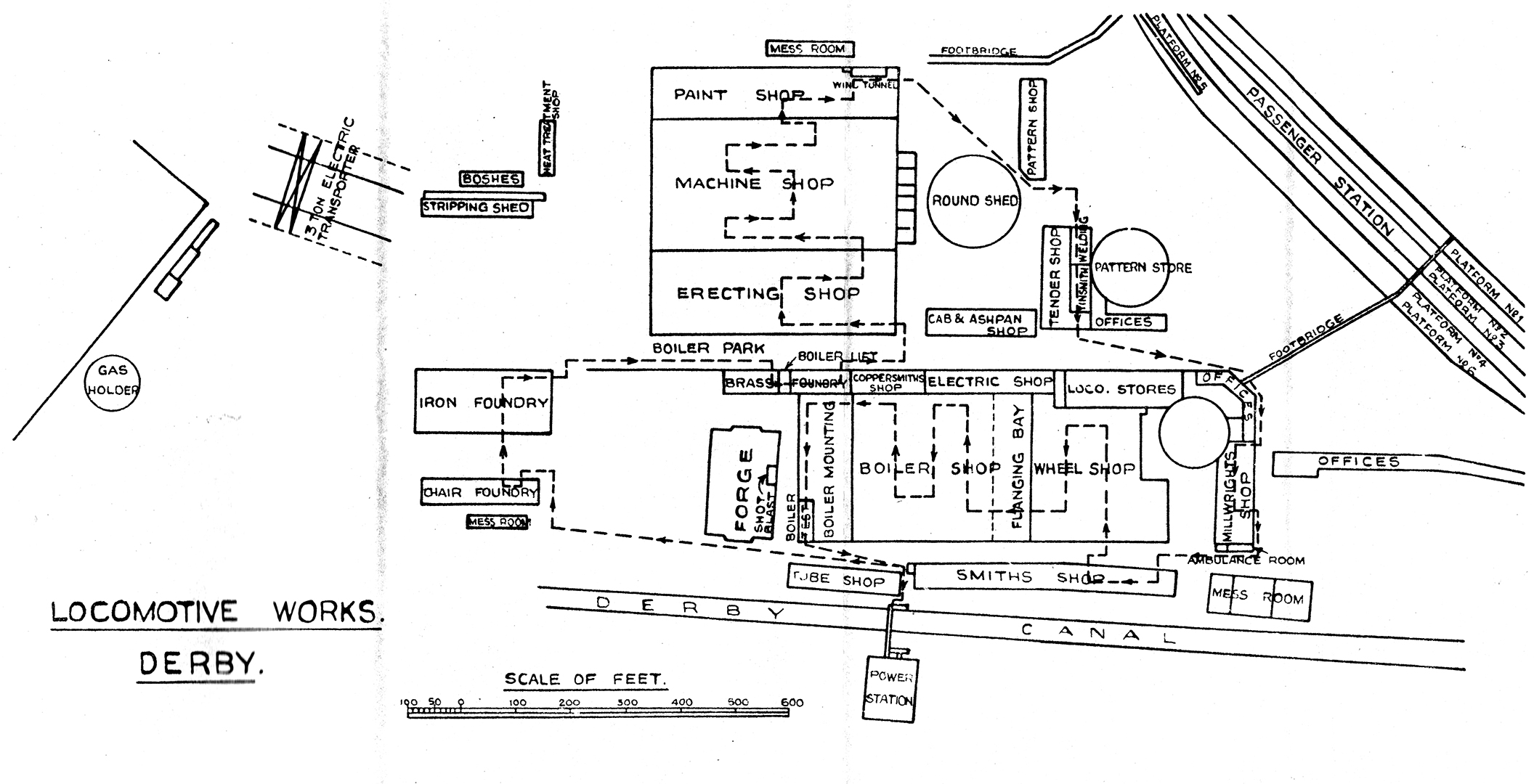
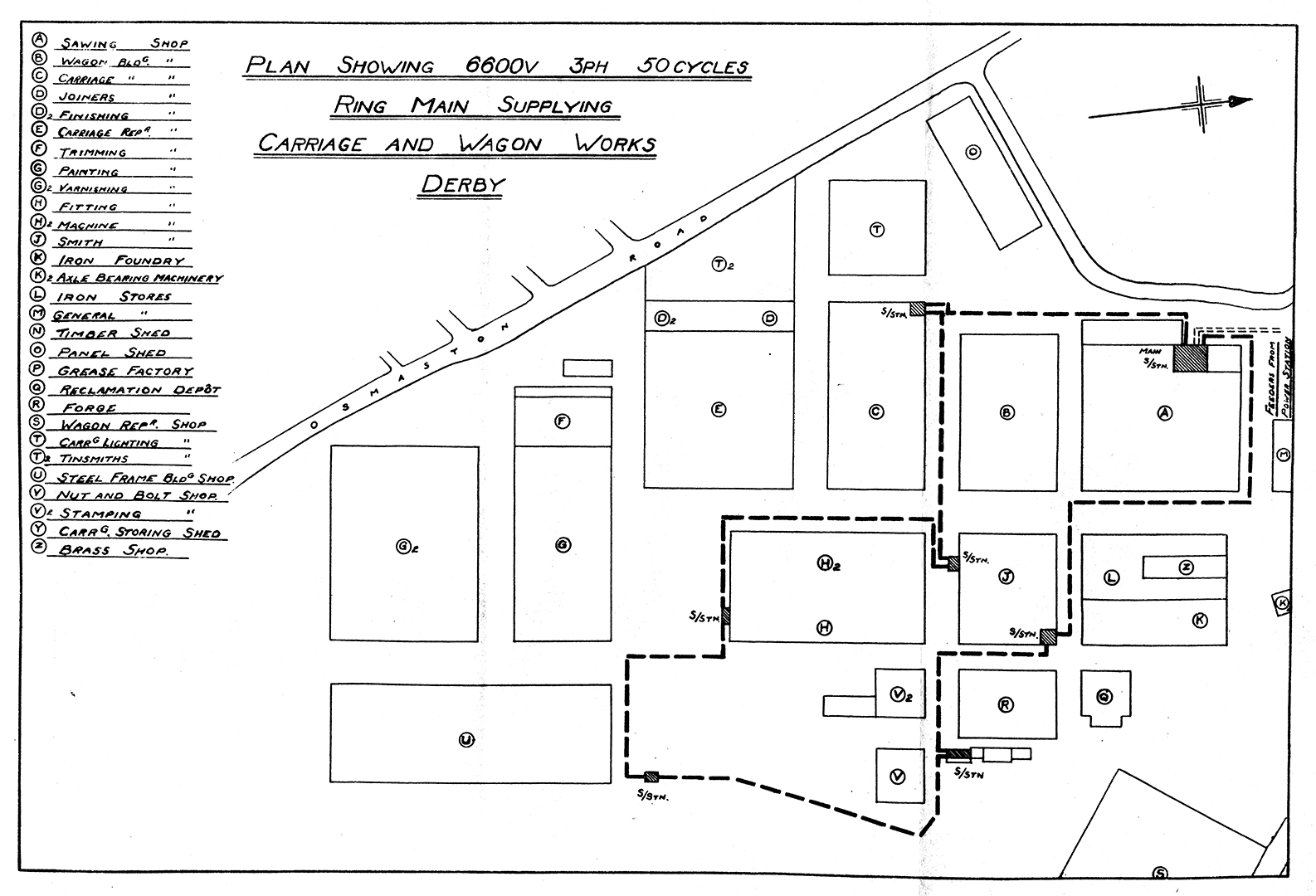
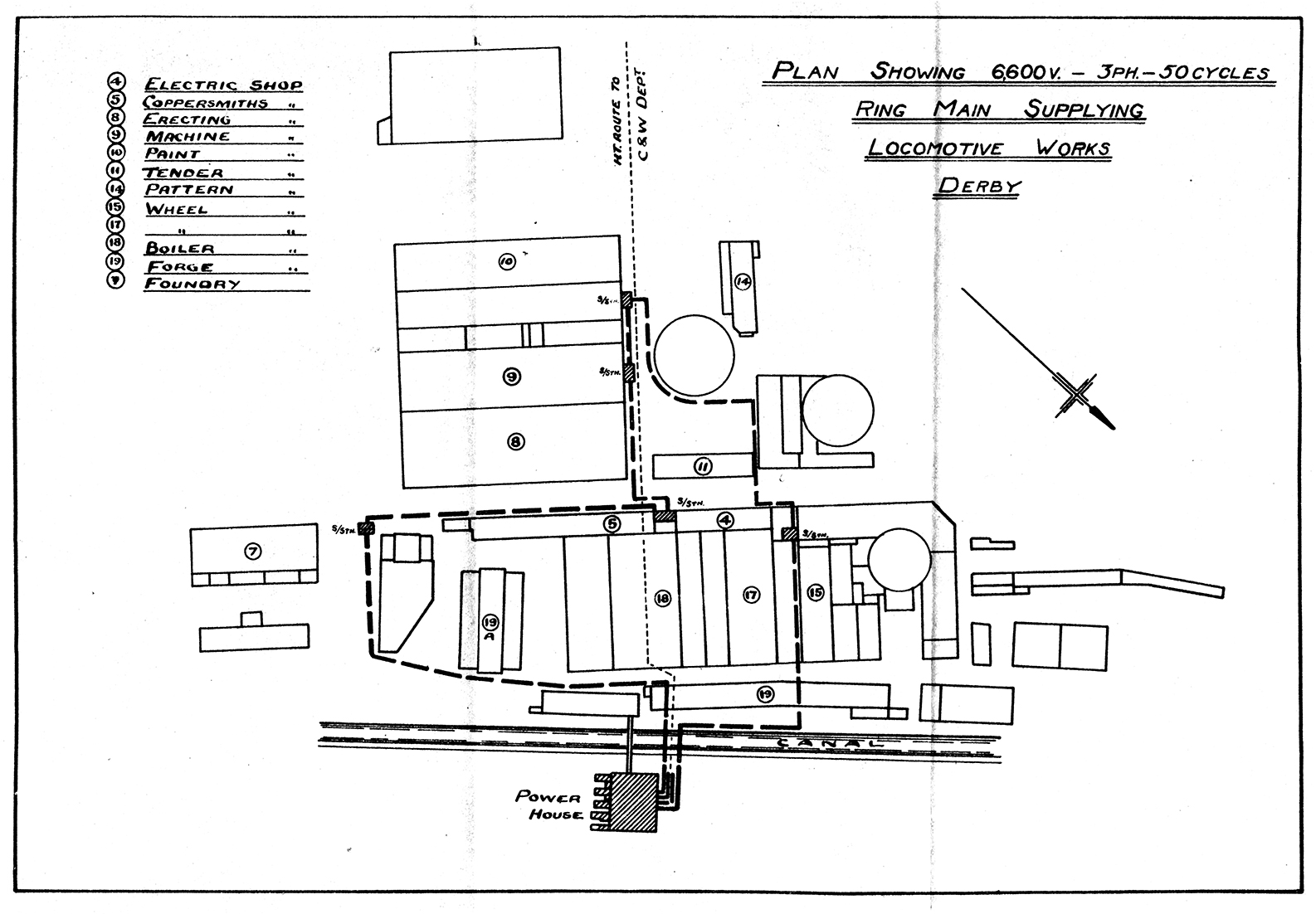
Site contents Copyright © LMS Society, 2024
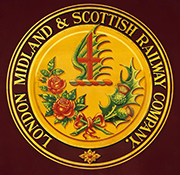
April 25th, 2024
Site contents Copyright © LMS Society, 2024